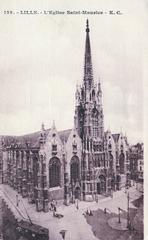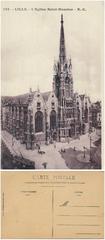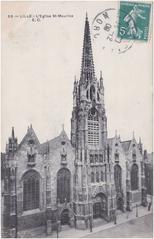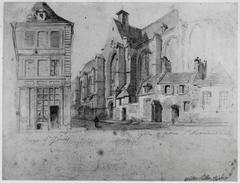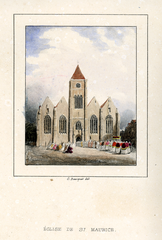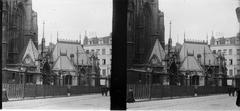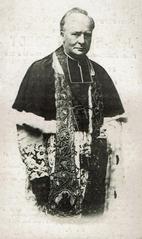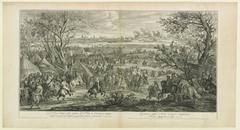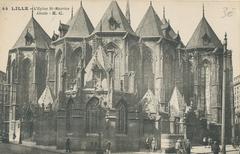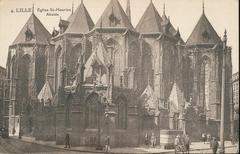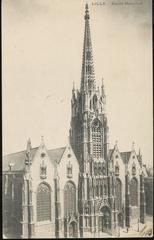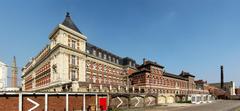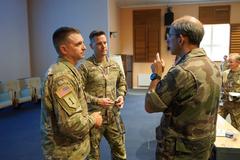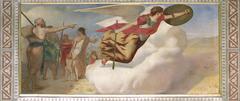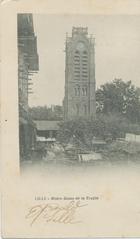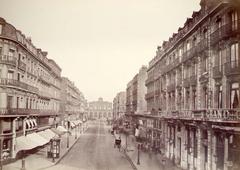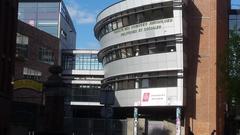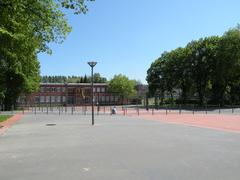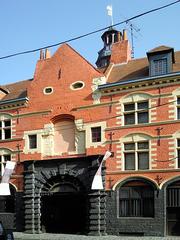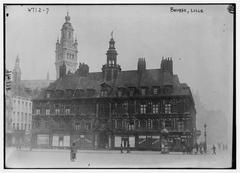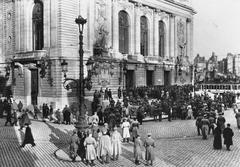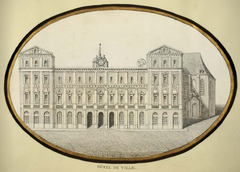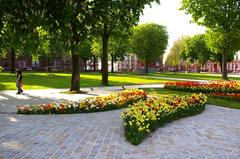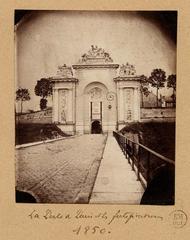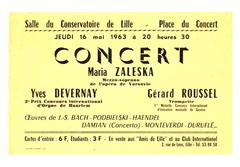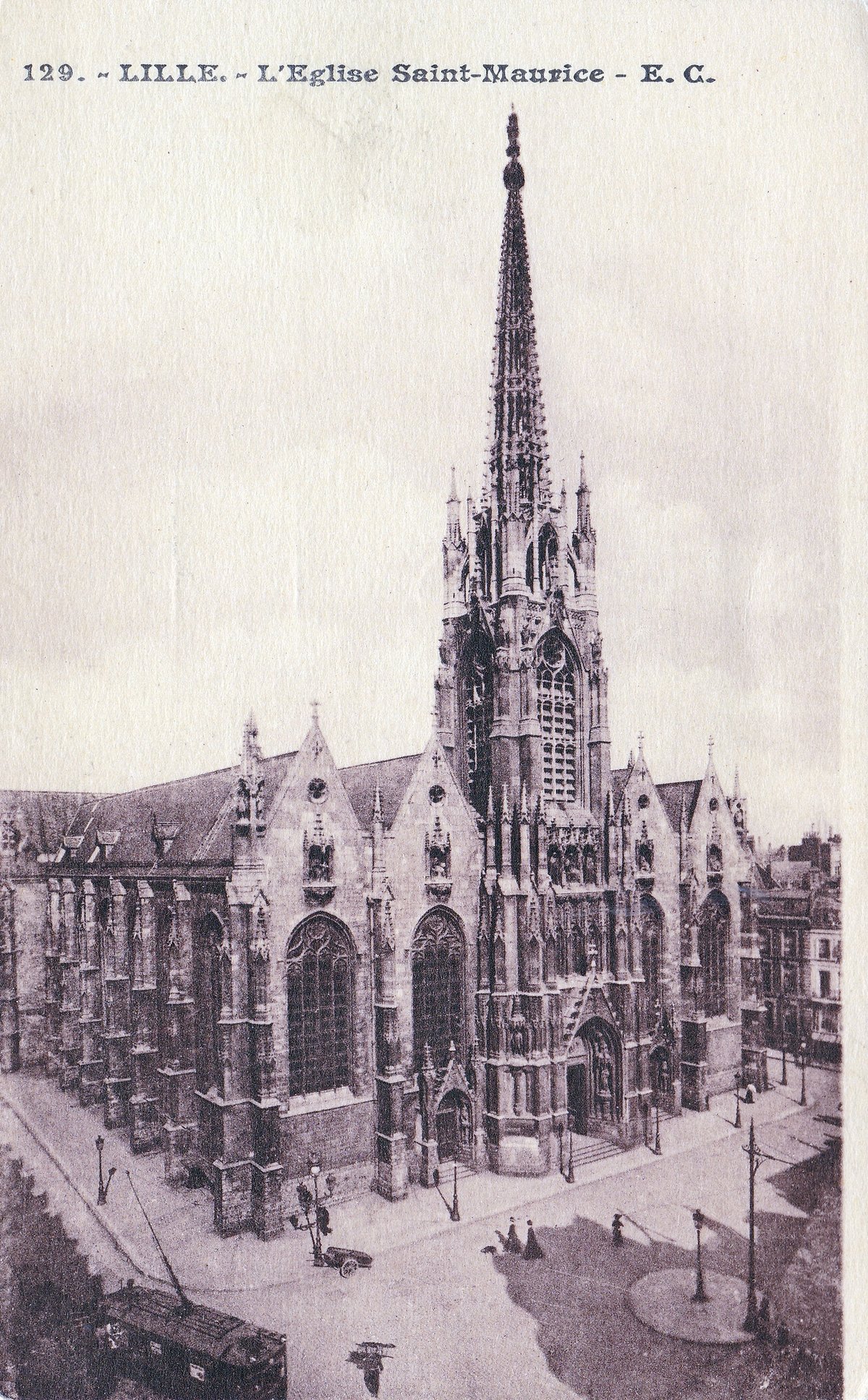
Visiting Saint-Maurice Church in Lille: Hours, Tickets, and Tips
Publication Date: 16/08/2024
Introduction to Saint-Maurice Church
Discovering the architectural marvels and historical depth of Saint-Maurice Church in Lille, France, is an enriching experience for history enthusiasts, architecture admirers, and travelers alike. Founded in the 11th century, this Gothic-style hall church stands as a testament to the evolving architectural styles and cultural significance spanning several centuries. The construction of this magnificent edifice began in the late 14th century, embodying Gothic and Neo-Gothic elements that reflect the artistic and architectural advancements of its time (Wikipedia).
Saint-Maurice Church is not just an architectural wonder but also a historical landmark that has witnessed significant events, including its classification as a ‘monument historique’ in 1914 and its transformation during the French Revolution when it was temporarily repurposed as a ‘Temple of Reason.’ The church’s interior is adorned with exquisite paintings from the 17th and 18th centuries and houses notable decorative elements, making it a treasure trove of art and history (France Voyage).
Situated in Lille’s historic center, Saint-Maurice Church is easily accessible and surrounded by other significant landmarks, making it an ideal starting point for exploring the rich cultural heritage of the city. This guide aims to provide an in-depth overview of the church’s historical significance, architectural features, visitor information, and travel tips to ensure a comprehensive and memorable visit.
Table of Contents
- [Introduction](#introductionintroduction)
- [History of Saint-Maurice Church, Lille](#history-of-saint-maurice-church-lillehistory-of-saint-maurice-church-lille)
- [Origins and Early Construction](#origins-and-early-constructionorigins-and-early-construction)
- [Gothic and Neo-Gothic Architecture](#gothic-and-neo-gothic-architecturegothic-and-neo-gothic-architecture)
- [Historical Significance](#historical-significancehistorical-significance)
- [19th Century Transformations](#19th-century-transformations19th-century-transformations)
- [Artistic and Decorative Elements](#artistic-and-decorative-elementsartistic-and-decorative-elements)
- [Restoration Efforts](#restoration-effortsrestoration-efforts)
- [Modern-Day Significance](#modern-day-significancemodern-day-significance)
- [Visitor Information](#visitor-informationvisitor-information)
- [Nearby Attractions](#nearby-attractionsnearby-attractions)
- [FAQ](#faqfaq)
- [Conclusion](#conclusionconclusion)
History of Saint-Maurice Church, Lille
Origins and Early Construction
The origins of the Saint-Maurice Church in Lille trace back to the 11th century when a first temple dedicated to the god Mars existed on the site. The initial church structure was erected in the same location, marking the beginning of a long and complex history. The construction of the current Gothic-style hall church began at the end of the 14th century, a period characterized by significant architectural and cultural developments in Europe.
Gothic and Neo-Gothic Architecture
The church is a quintessential example of a hall church, a type of Gothic architecture where the nave and aisles are of the same height, creating a spacious and unified interior. The construction spanned over four centuries, from the 14th to the 19th century, reflecting various architectural styles and historical influences. The church’s design includes five naves of equal width and height, giving it an imposing yet light-filled appearance. The Gothic and neo-Gothic elements are evident in its pointed arches, ribbed vaults, and intricate tracery.
Historical Significance
Saint-Maurice Church holds significant historical value, having been classified as a monument historique in 1914. This designation underscores its importance as a cultural and architectural landmark in Lille. The church has witnessed numerous historical events, including the French Revolution, during which it was stripped of its furnishings and repurposed as a “Temple of Reason.” This period marked a pause in its religious functions, but the church’s role in the community was restored in the 19th century.
19th Century Transformations
The 19th century was a transformative period for Saint-Maurice Church. Significant extensions were made, including the addition of three bays and the construction of a new belfry, which stands at 68 meters tall. These changes were part of an ambitious plan to elevate the church to cathedral status when the diocese of Lille was created. Although this plan was not realized, as the construction of the Notre-Dame de la Treille Cathedral was decided instead, the enhancements contributed to the church’s grandeur and historical depth.
Artistic and Decorative Elements
Despite the ravages of the French Revolution, Saint-Maurice Church retains several beautiful decorative elements. The interior houses paintings from the 17th and 18th centuries, including works from old convents in Lille. Notable pieces include “The Flight into Egypt” from the 17th century and scenes from the Passion from the 18th century. The church also features a monument to the Duke of Berry, containing the viscera of Charles Ferdinand d’Artois, who was assassinated. This monument includes exquisite white marble statues representing the city of Lille and Religion.
Restoration Efforts
The church has undergone several restoration efforts, particularly in the 2000s and 2010s, to preserve its architectural integrity and historical significance. These restorations have focused on maintaining the nave with its seven bays, four side chapels, and an ambulatory with three radiating chapels. The continuous efforts to restore and maintain the church highlight its importance as a historical and cultural asset.
Modern-Day Significance
Today, Saint-Maurice Church continues to be a focal point for visitors and locals alike. It is part of the Open Churches network, which promotes the accessibility and appreciation of historical churches across Europe. The church’s “Livre d’Or” (Golden Book) reflects the diversity of its visitors, showcasing its global appeal and significance.
Visitor Information
Saint-Maurice Church is open to visitors throughout the year, with specific opening hours for each day of the week. Religious services are held regularly, providing an opportunity for visitors to experience the church’s spiritual ambiance. The church’s central location near the Lille-Flandres station makes it easily accessible for tourists. Entry to the church is free, although donations are appreciated to help with maintenance and restoration efforts. For more detailed visiting hours, ticket information, and special events, visitors can refer to resources such as Travalour and France Voyage.
Nearby Attractions
Saint-Maurice Church is situated in the historic center of Lille, surrounded by other notable landmarks. Nearby attractions include the Notre-Dame-de-la-Treille Cathedral, a majestic Gothic cathedral built in the 19th century, and the Beffroi de Lille, the tallest belfry in Europe and a UNESCO World Heritage Site. The church’s location makes it an ideal starting point for exploring the rich history and culture of Lille.
FAQ
Q: What are the visiting hours for Saint-Maurice Church?
A: The church is open daily, but the hours may vary. It’s advisable to check the latest timings on their official website or local tourism guides.
Q: Is there an entry fee?
A: Entry to Saint-Maurice Church is free, although donations are appreciated.
Q: Are there guided tours available?
A: Yes, guided tours are available. For more information, refer to local tourism resources or the church’s official website.
Q: What should I not miss inside the church?
A: Don’t miss the 17th and 18th-century paintings, the monument to the Duke of Berry, and the intricate Gothic and neo-Gothic architectural details.
Conclusion
Saint-Maurice Church in Lille is a treasure trove of history, art, and architecture. Whether you are a history buff, an architecture enthusiast, or a spiritual seeker, the church offers something for everyone. Plan your visit today and immerse yourself in the rich cultural heritage of Lille.
For more information on visiting hours, tickets, and local attractions, check out Travalour and France Voyage.
Summary and Key Points
Saint-Maurice Church in Lille is a beacon of historical and architectural heritage, offering a profound glimpse into the past while continuing to serve as a vibrant place of worship and community gathering. The church’s Gothic and Neo-Gothic architecture, coupled with its rich collection of 17th and 18th-century artworks, provide visitors with an immersive experience that is both visually and spiritually enriching. Continuous restoration efforts have preserved its grandeur, ensuring that this historical monument remains a cherished landmark for future generations (Religiana).
As part of the Open Churches network, Saint-Maurice Church stands as a testament to the enduring significance of historical religious sites in Europe, promoting accessibility and appreciation among a diverse array of visitors. Whether you are an architecture enthusiast, a history buff, or a spiritual seeker, Saint-Maurice Church offers a rich and multifaceted experience that captures the essence of Lille’s cultural heritage. Plan your visit today and immerse yourself in the timeless beauty and historical depth of this remarkable monument (Open Churches).
References and Further Reading
- Wikipedia, 2024, Lille’s Saint-Maurice Church source url
- France Voyage, 2024, Visiting Saint-Maurice Church source url
- Religiana, 2024, Architectural Significance of Saint-Maurice Church source url
- Open Churches, 2024, Saint-Maurice Church Network source url
